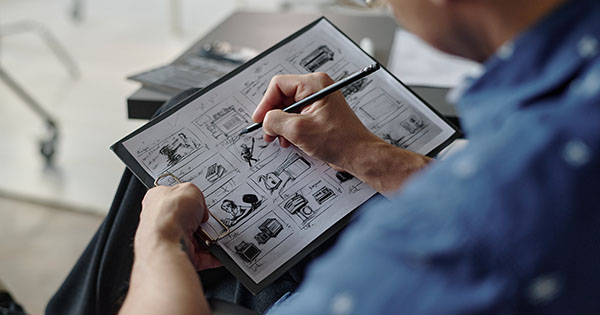When it comes to Video Production, Efficiency Equals Cost Savings
Being efficient is obviously a good way to save time, and when time costs money, it also saves you money. Video production is an excellent example of this at play. When meeting with a client to plan what video shoots are necessary to accomplish their goals, we remind them that if there is a budget we must stay in, then they will get the most bang for their buck if we shoot the project as efficiently as possible.
One of the biggest costs to video production is how many times do we have to pick up our video production gear, take it somewhere, set it up, then take it all down. Each repetition of this process is an enormous amount of time not producing video, and that is time you pay for. But good planning, flexibility and economy of scale will help avoid wasteful spending.
Example on How to be Cost Effective When Planning for Your Video Shoot
Syncing up a Shoot Time for More Than One Subject
Say you want to interview subjects A, B and C. But each subject is such a busy person that getting their schedules to line up for a video interview is difficult. In that case, we could certainly interview them separately to accommodate their individual schedules. However, know that is effectively tripling the cost of shooting the interviews.
In the video services industry, it is typical to provide a "half day" or "full day" shoot rate. A full day is cheaper per hour than a half day rate because once you are set up and shooting video, it's easy enough to keep on shooting! So the video interviews that could have been shot over one full, or even one half day, is now going to cost 3x as much to shoot subjects A, B, and C separately. If you have the budget for that, or if A, B and C's time is that valuable, then it may be worth it. But most clients do seem to find it is actually possible to get A, B, and C synced enough for some shoot, some day.

Example of 5 different interviews shot in the same day in the same location
Limiting Different Location Shoots
But what if subjects A, B, and C are located in totally different towns? Going to different locations is again, going to cost extra. Perhaps A, B, and C can converge at headquarters? Or another scenario -- we have shot video interviews with nation wide employees who were in town for their company's annual in-person conference. Obviously timing the video shoot for that is far more efficient than flying a video crew out to multiple locations, or hiring a slew of local video crews across the country.
Scripting, Shot Listing, and Storyboarding to Plan Every Word and Action
Scripting is another way to control time. Interviews have their advantages, but if time is really of the essence, scripting out exactly what a person will say, will easily shave 10, 20 or even more minutes off that person's time on camera compared to a 20-30 minute interview. Once we have a script in hand, we load it onto a teleprompter that the subject can then read.
If your shoot needs to be even more controlled, such as a commercial with actors doing particular actions, you might want to consider a storyboard as well. This will give you a visual check list as you go through each scene. Or, if a storyboard is overkill, you could have a shot list, a written list of descriptions of "shots" you want to capture. Even if the client doesn't prepare a storyboard or shot list, if it is deemed necessary, Kohlitz will do either of these.

Extrapolate the Above Points for Larger, More Complex Projects
The above example with subjects A, B, and C is fairly straight forward but you can extrapolate that thinking to more complex projects. For instance, we had a client in the past who had wanted 20+ short training videos made, with multiple locations and several actors performing various different scenes. To be cost effective, we had proposed keeping the number of locations down to four, and the number of actors down to three (a "spokesperson" narrator, and two subjects acting out the scenes) and that everything should be scripted and storyboarded, or at least shot listed.
We further created a schedule, planning for our shoots to take just two full days. First half of the day at one location, then a second location for the second half of the day. Repeat the next day for two more locations. This would require extensive planning and preparation up front but would pay dividends in the long run.
As you can see, there are many ways you can approach video production capably. Fortunately here at Kohlitz, we have 14+ years figuring this out so you don't have to!